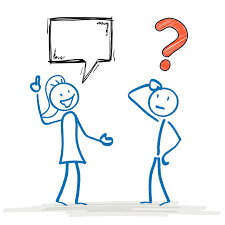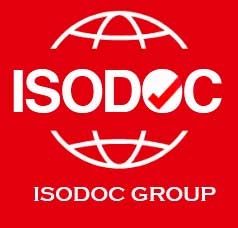7 Support
7.1 Resources
7.1.1 General
The organization shall determine and provide the resources needed for the establishment,
implementation, maintenance, and continual improvement of the quality management system.
The organization shall consider:
a) the capabilities of, and constraints on, existing internal resources;
b) what needs to be obtained from external providers.
7.1.2 People
The organization shall determine and provide the persons necessary for the effective implementation
of its quality management system and for the operation and control of its processes.
7.1.3 Infrastructure
The organization shall determine, provide and maintain the infrastructure necessary for the operation
of its processes and to achieve conformity of products and services.
NOTE Infrastructure can include:
a) buildings and associated utilities;
b) equipment, including hardware and software;
c) transportation resources;
d) information and communication technology.
7.1.4 Environment for the operation of processes
The organization shall determine, provide and maintain the environment necessary for the operation
of its processes and to achieve conformity of products and services.
NOTE A suitable environment can be a combination of human and physical factors, such as:
a) social (e.g. non-discriminatory, calm, non-confrontational);
b) psychological (e.g. stress-reducing, burnout prevention, emotionally protective);
c) physical (e.g. temperature, heat, humidity, light, airflow, hygiene, noise).
These factors can differ substantially depending on the products and services provided.
7.1.5 Monitoring and measuring resources
7.1.5.1 General
The organization shall determine and provide the resources needed to ensure valid and reliable
results when monitoring or measuring is used to verify the conformity of products and services to
requirements.
The organization shall ensure that the resources provided:
a) are suitable for the specific type of monitoring and measurement activities being undertaken;
b) are maintained to ensure their continuing fitness for their purpose.
The organization shall retain appropriate documented information as evidence of fitness for the purpose of monitoring and measurement resources.
7.1.5.2 Measurement traceability
When measurement traceability is a requirement or is considered by the organization to be an essential
part of providing confidence in the validity of measurement results, measuring equipment shall be:
a) calibrated or verified, or both, at specified intervals, or prior to use, against measurement standards
traceable to international or national measurement standards; when no such standards exist, the basis used for calibration or verification shall be retained as documented information;
b) identified in order to determine their status;
c) safeguarded from adjustments, damage or deterioration that would invalidate the calibration
status and subsequent measurement results.
The organization shall determine if the validity of previous measurement results has been adversely
affected when measuring equipment is found to be unfit for its intended purpose, and shall take
appropriate action as necessary.
7.1.6 Organizational knowledge
The organization shall determine the knowledge necessary for the operation of its processes and to
achieve conformity of products and services.
This knowledge shall be maintained and be made available to the extent necessary.
When addressing changing needs and trends, the organization shall consider its current knowledge
and determine how to acquire or access any necessary additional knowledge and required updates.
NOTE 1 Organizational knowledge is knowledge specific to the organization; it is generally gained by
experience. It is information that is used and shared to achieve the organization’s objectives.
NOTE 2 Organizational knowledge can be based on:
a) internal sources (e.g. intellectual property; knowledge gained from experience; lessons learned from
failures and successful projects; capturing and sharing undocumented knowledge and experience; the results of
improvements in processes, products and services);
b) external sources ( e.g. standards; academia; conferences; gathering knowledge from customers or
external providers).
7 Support
7.2 Competence
The organization shall:
a) determine the necessary competence of person(s) doing work under its control that affects the
performance and effectiveness of the quality management system;
b) ensure that these persons are competent on the basis of appropriate education, training, or
experience;
c) where applicable, take actions to acquire the necessary competence, and evaluate the effectiveness
of the actions taken;
d) retain appropriate documented information as evidence of competence.
NOTE Applicable actions can include, for example, the provision of training to, the mentoring of, or the reassignment of currently employed persons; or the hiring or contracting of competent persons.
7 Support
7.3 Awareness
The organization shall ensure that persons doing work under the organization’s control are aware of:
a) the quality policy;
b) relevant quality objectives;
c) their contribution to the effectiveness of the quality management system, including the benefits of
improved performance;
d) the implications of not conforming with the quality management system requirements.

7 Support
7.4 Communication
The organization shall determine the internal and external communications relevant to the quality
management system, including:
a) on what it will communicate;
b) when to communicate;
c) with whom to communicate;
d) how to communicate;
e) who communicates.
7 Support
7.5 Documented information
7.5.1 General
The organization’s quality management system shall include:
a) documented information required by this International Standard;
b) documented information determined by the organization as being necessary for the effectiveness
of the quality management system.
NOTE The extent of documented information for a quality management system can differ from one
organization to another due to:
— the size of the organization and its type of activities, processes, products and services;
— the complexity of processes and their interactions;
— the competence of persons.
7.5.2 Creating and updating
When creating and updating documented information, the organization shall ensure appropriate:
a) identification and description (e.g. a title, date, author, or reference number);
b) format (e.g. language, software version, graphics) and media (e.g. paper, electronic);
c) review and approval for suitability and adequacy.
7.5.3 Control of documented information
7.5.3.1 Documented information required by the quality management system and by this International
The standard shall be controlled to ensure:
a) it is available and suitable for use, where and when it is needed;
b) it is adequately protected (e.g. from loss of confidentiality, improper use, or loss of integrity).
7.5.3.2 For the control of documented information, the organization shall address the following
activities, as applicable:
a) distribution, access, retrieval, and use;
b) storage and preservation, including preservation of legibility;
c) control of changes (e.g. version control);
d) retention and disposition.
Documented information of external origin determined by the organization to be necessary for the
planning and operation of the quality management system shall be identified as appropriate, and
be controlled.
Documented information retained as evidence of conformity shall be protected from unintended
alterations.
NOTE Access can imply a decision regarding the permission to view the documented information only, or
the permission and authority to view and change the documented information.

